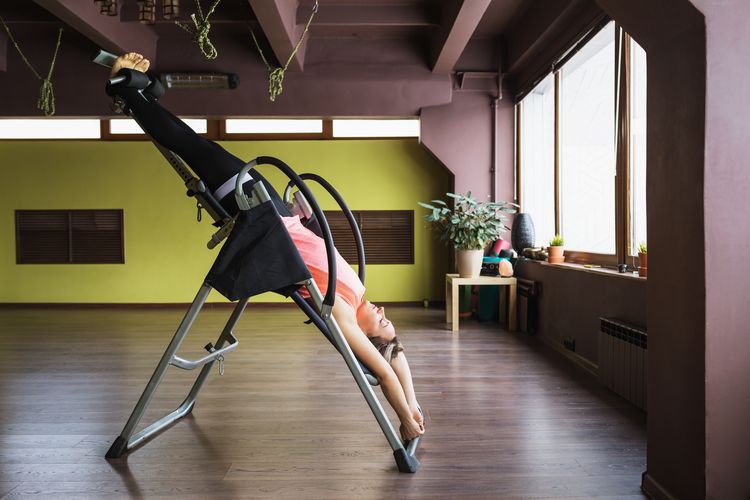12 Proven Ways To Quickly Recover From Exercise
You’ve mastered your workout routine, increased the intensity, and made daily exercise not just a maybe, but a necessity in your life. But there’s something that you haven’t considered, and that’s recovery. And by “recovery,” we’re not talking just about “not feeling sore.”

Real Recovery
Recovery includes your red and white blood cells normalizing, inflammation subsiding, muscle fibers healing, the restoring of hormones and neurotransmitters, and the replenishing of minerals. How long does an average recovery take? After a 40- to 60-minute intense workout such as CrossFit WOD, full recovery can take three to seven days. For an extreme event like an Ironman race or a marathon, 10 to 14 days of recovery may be required. And after an Ironman triathlon, it could take more than 19 days for your body to bounce back.
Slower recovery times can result in fewer training days in the course of a year, a decrease in training quality, and limited improvement in your routine. But you don’t need to accept performing below your potential or suffering from nagging aches, pains, and injuries, if you effectively support your body’s recovery process.
Read on to learn about proven techniques for taking recovery to a new level, and helping you to feel stronger and more energized, day in and day out.

Proteolytic Enzymes and Essential Amino Acids
Proteolytic enzymes allow certain chemical reactions to occur in the body much quicker, including those involved in exercise recovery. According to Enzymes & Enzyme Therapy author Anthony Cichoke, these enzymes can help reduce recovery time for sprains and strains from eight weeks of inactivity to two weeks. Another study found that protease supplementation reduced the amount of strength loss immediately after eccentric exercise and aided in short-term strength recovery.
Essential Amino Acids (EAAs) keep your body from using your own lean-muscle tissue for energy during exercise, which means they’re a better option for exercise recovery than BCAAs alone. Ingesting EAAs post workout may stimulate faster muscle repair and recovery because of their ability to increase muscle protein synthesis and net muscle protein balance.

Inversion, Acupuncture, and Vibration Therapy
Inversion has been shown to help with lymphatic fluid circulation, pain in the back, blood flow and circulation, and spinal or hip misalignment from high-impact workouts. The use of an inversion table can also help to lengthen the spine and mobilizes the hips. If you don’t want to invest in an inversion table or a yoga swing, you can get the same effect by just propping your feet up against the wall and letting the blood drain from your legs to the rest of your body for two to five minutes.
Acupuncture has been known to help with recovery from muscular fatigue, adrenal fatigue, muscle pain, and many of the common aches and pains associated with being physically active or overtraining.
Whole body vibration (WBV) therapy, which involves standing or moving on a vibration platform, can not only increase strength, power, and speed but also generate a hormonal, immune, and anti-inflammatory response. As a training tool, low-frequency vibration increases both muscle strength and muscular blood circulation by increasing blood flow velocity and reducing resistance.

Pulsed Electromagnetic Field Therapy and Far-Infrared Light
Pulsed Electromagnetic Field Therapy (PEMF) uses electrical energy to direct a series of magnetic pulses through injured tissue, which then stimulates cellular repair by up-regulating a tissue-repair protein and increasing the uptake of oxygen and nutrients into tissue. Studies suggest that PEMF can effectively heal soft-tissue wounds, reduce inflammation, decrease pain, and increase range of motion.
Far-infrared light is radiant and thermal, like the heat we get from sunlight. Exposing the body to infrared light has been shown to raise white blood cell count, enhance immunity, and increase blood flow to injured or recovering muscles.

Electrical Muscle Stimulation, Compression Gear, and Deep-Tissue Work
Electrical Muscle Stimulation (EMS) sends electrical signals to muscles, causing them to contract. Depending on the type of EMS Unit, the muscles can be activated in a therapeutic manner. EMS effects can be enhanced by spraying the skin before treatment with magnesium, arnica gel, or any topical anti-inflammatory.
Research has shown that compression can positively impact vitality, resting fatigue ratings, muscle soreness, muscle swelling, bench press throw, and serum concentrations of creatine kinase.
Deep-tissue work includes techniques that dig into your fascia, such as Rolfing, Muscle Activation Technique, Advanced Muscle Integrative Therapy, Graston Technique, Trigger Point Therapy, deep-tissue sports massage, and foam rolling. In addition, you can simply use a tennis ball, lacrosse ball, or golf ball to dig into tight or sore spots.

Natural Anti-Inflammatory Foods
Assessing the inflammatory effect of a specific food takes into account at least two dozen factors, including the amounts of fatty acids, antioxidants and other nutrients, as well as glycemic impact.
Natural anti-inflammatory foods include:
- Pineapple | Rich in a proteolytic enzyme called bromelain, pineapple produces substances that help fight pain and inflammation.
- Blue, red, and purple fruits and vegetables | These foods contain antioxidant flavonoids that limit inflammation, prevent tissue breakdown, improve circulation, and promote a strong collagen matrix.
- Tart Cherry Juice | Tart cherries have strong antioxidant and anti-inflammatory properties that may reduce the severity of exercise-induced muscle damage and the associated pain and swelling.
- Ginger | The strong antioxidant and anti-inflammatory properties of ginger can help reduce muscle pain following exercise-induced injury.
- Turmeric | This “golden herb” has been found to enhance recovery time as well as speed wound healing.

Fasting
Sports nutritionists generally advise you to enter workouts well-fed, and to consume a post-workout protein shake or meal. But evidence exists that fasting can have a beneficial impact on recovery. In a study conducted on cyclists, three weeks of overnight-fasted workouts increased post-workout recovery capability while at the same time maintained their lean muscle mass, lower body fat, and performance. A study on endurance athletes suggested that fasted training may more quickly activate muscle protein translation, or repair, especially compared with athletes who ate carbohydrates before training.
